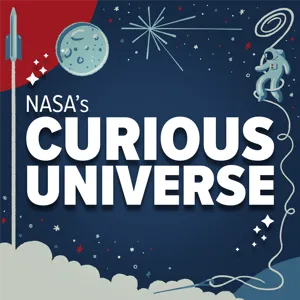Podcast Summary
The Sun's 11-year cycle of activity: The sun's 11-year cycle brings periods of high and low activity, with large eruptions still possible during seemingly calm solar minimums.
The sun, which is essential for our existence, goes through its own cycles of activity every 11 years, known as the solar cycle. These cycles bring about periods of high solar activity, called solar maximum, and low activity, called solar minimum. While the current solar cycle, 25, is expected to be mild, it's important to remember that large eruptions can still occur at any time, despite the sun's seemingly calm appearance. The sun's surface, made entirely of plasma, doesn't rotate uniformly, spinning faster at the equator than at the poles. This dynamic star is a constant source of energy and change, reminding us of the wild and wonderful universe we inhabit.
Sun's magnetic fields form sunspots and indicate solar cycle stage: Sunspots are dark areas on the sun's surface caused by magnetic fields. Their numbers indicate the solar cycle stage, with more sunspots signaling increased solar activity.
The sun's magnetic fields play a crucial role in the formation of sunspots and the solar cycle. The plasma of ionized particles creates magnetic fields, which twist and tangle beneath the sun's surface. These magnetic fields can poke through the surface, appearing as dark sunspots. Sunspots have been observed and counted for centuries, and their numbers indicate the stage of the solar cycle. The sun experiences approximately 11-year cycles of magnetic activity, with more sunspots indicating increased solar activity. Sunspots are important indicators of solar behavior and help scientists predict space weather events. Despite advancements in technology, the centuries-old method of counting sunspots remains the most effective due to the high resolution of modern telescopes and cameras, which detect smaller spots that may not have been visible to early astronomers.
Manually sketching sunspots daily for sunspot number calculations: Hand-drawn sunspot diagrams are vital for calculating the first official sunspot number, tracking solar cycle, and predicting solar storms, despite modern telescopes providing more detailed information.
Solar observers around the world manually sketch sunspots daily using telescopes and paper to record the sun's surface activity. These hand-drawn diagrams, though simple, are crucial for calculating the first official sunspot number of the day. Sunspot numbers and their locations are essential for tracking the solar cycle and predicting solar storms, which can have significant impacts on Earth. Solar maximum, when the sun has numerous sunspots, makes this task challenging, requiring observers to work quickly. Modern telescopes provide more detailed information, but these diagrams remain vital for sunspot number calculations. The sunspot number, along with other measurements like the location of sunspots, helps create butterfly diagrams, which illustrate the progression of the solar cycle. These diagrams resemble butterflies, with sunspots appearing near the poles during solar minimum and moving towards the equator during solar maximum. Solar storms, originating from sunspots, can cause magnetic storms that affect Earth, as seen during the Carrington Event of 1859. Understanding the sun's activity through sunspot observations remains essential for monitoring space weather and its potential impact on our technology.
Solar activity's impact on technology: Solar flares and coronal mass ejections can disrupt technology, as seen in the Carrington event of 1859 and the 1989 blackouts. Preparation is crucial to mitigate potential damages.
Solar activity, specifically solar flares and coronal mass ejections, can have significant impacts on society due to our heavy reliance on technology. The Carrington event in 1859, where a powerful solar storm disrupted telegraph networks worldwide, serves as a reminder of this. Solar flares are sudden bursts of electromagnetic energy, while coronal mass ejections are the sun's way of getting rid of its magnetic fields. These ejections can hurl material into space at high speeds, posing a threat to technology when they interact with Earth's atmosphere and magnetic field. The most famous example of this is the 1989 event, which caused power blackouts in the eastern United States and Canada. It's important to prepare for these disruptive events, as they are not a matter of if they will happen again, but when.
Understanding the Sun's Behavior and Solar Outbursts: Appreciating the sun as a crucial source of life and technology, scientists continue investigating its unpredictable behavior and potential impacts.
As we become increasingly reliant on technology, especially space assets, understanding the sun's behavior and anticipating solar outbursts like coronal mass ejections becomes crucial. The sun, which we often take for granted, is a star with an unpredictable side. While we have made significant strides in studying the sun, there is still much to learn. Scientists continue to investigate the sun's mysteries, including its role in supporting life on Earth and its potential impact on our technology. As we look up at the night sky in awe, we should also be introspective of the daytime sky and appreciate the power and importance of our neighborhood star. To keep up with the latest solar cycle science from NASA, visit nasa.gov/solarcycle.






